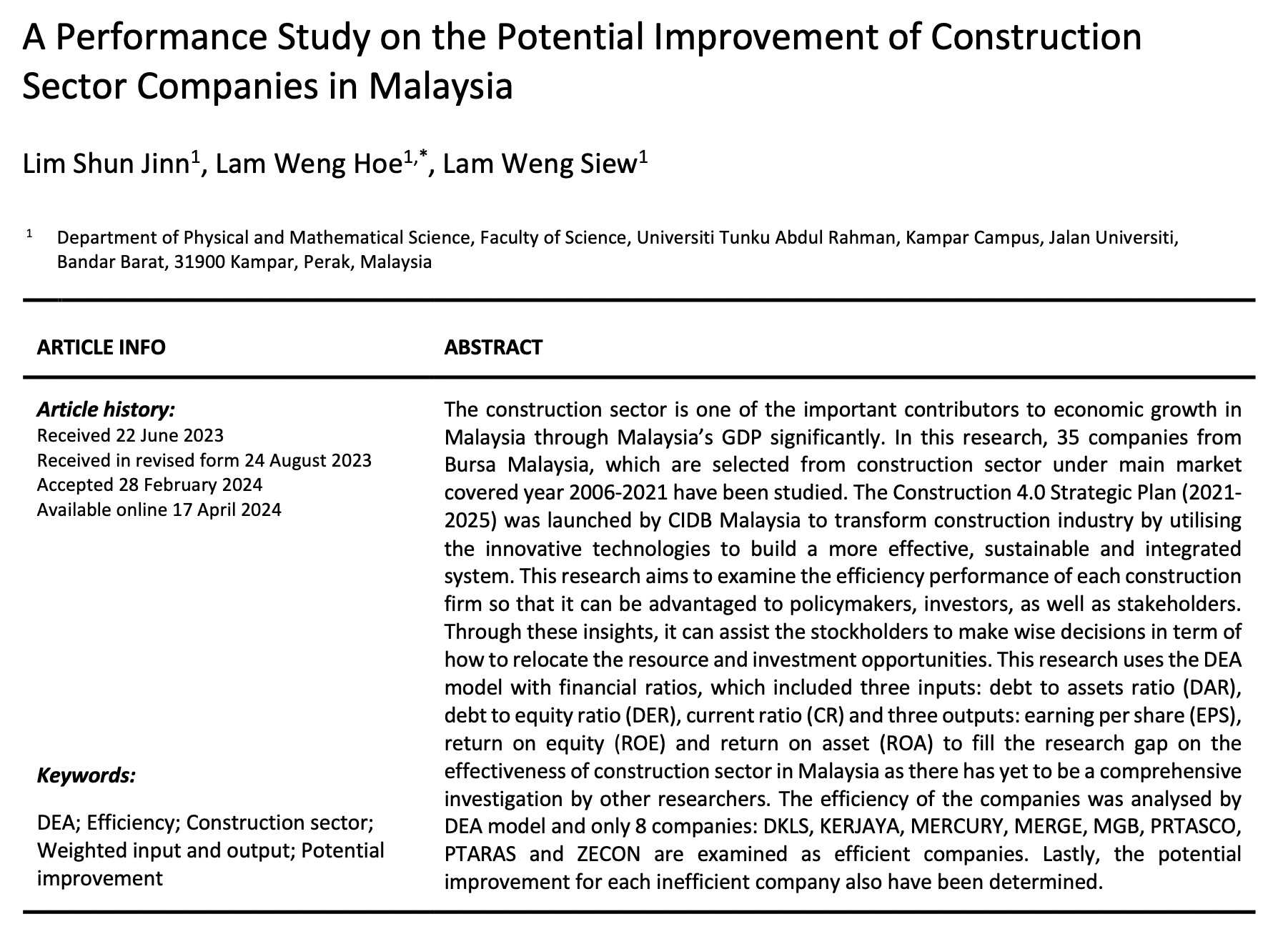A Performance Study on the Potential Improvement of Construction Sector Companies in Malaysia
DOI:
https://doi.org/10.37934/araset.43.2.6574Keywords:
DEA, Efficiency, Construction sector, Weighted input and output, Potential improvementAbstract
The construction sector is one of the important contributors to economic growth in Malaysia through Malaysia’s GDP significantly. In this research, 35 companies from Bursa Malaysia, which are selected from construction sector under main market covered year 2006-2021 have been studied. The Construction 4.0 Strategic Plan (2021-2025) was launched by CIDB Malaysia to transform construction industry by utilising the innovative technologies to build a more effective, sustainable and integrated system. This research aims to examine the efficiency performance of each construction firm so that it can be advantaged to policymakers, investors, as well as stakeholders. Through these insights, it can assist the stockholders to make wise decisions in term of how to relocate the resource and investment opportunities. This research uses the DEA model with financial ratios, which included three inputs: debt to assets ratio (DAR), debt to equity ratio (DER), current ratio (CR) and three outputs: earning per share (EPS), return on equity (ROE) and return on asset (ROA) to fill the research gap on the effectiveness of construction sector in Malaysia as there has yet to be a comprehensive investigation by other researchers. The efficiency of the companies was analysed by DEA model and only 8 companies: DKLS, KERJAYA, MERCURY, MERGE, MGB, PRTASCO, PTARAS and ZECON are examined as efficient companies. Lastly, the potential improvement for each inefficient company also have been determined.
Downloads





























